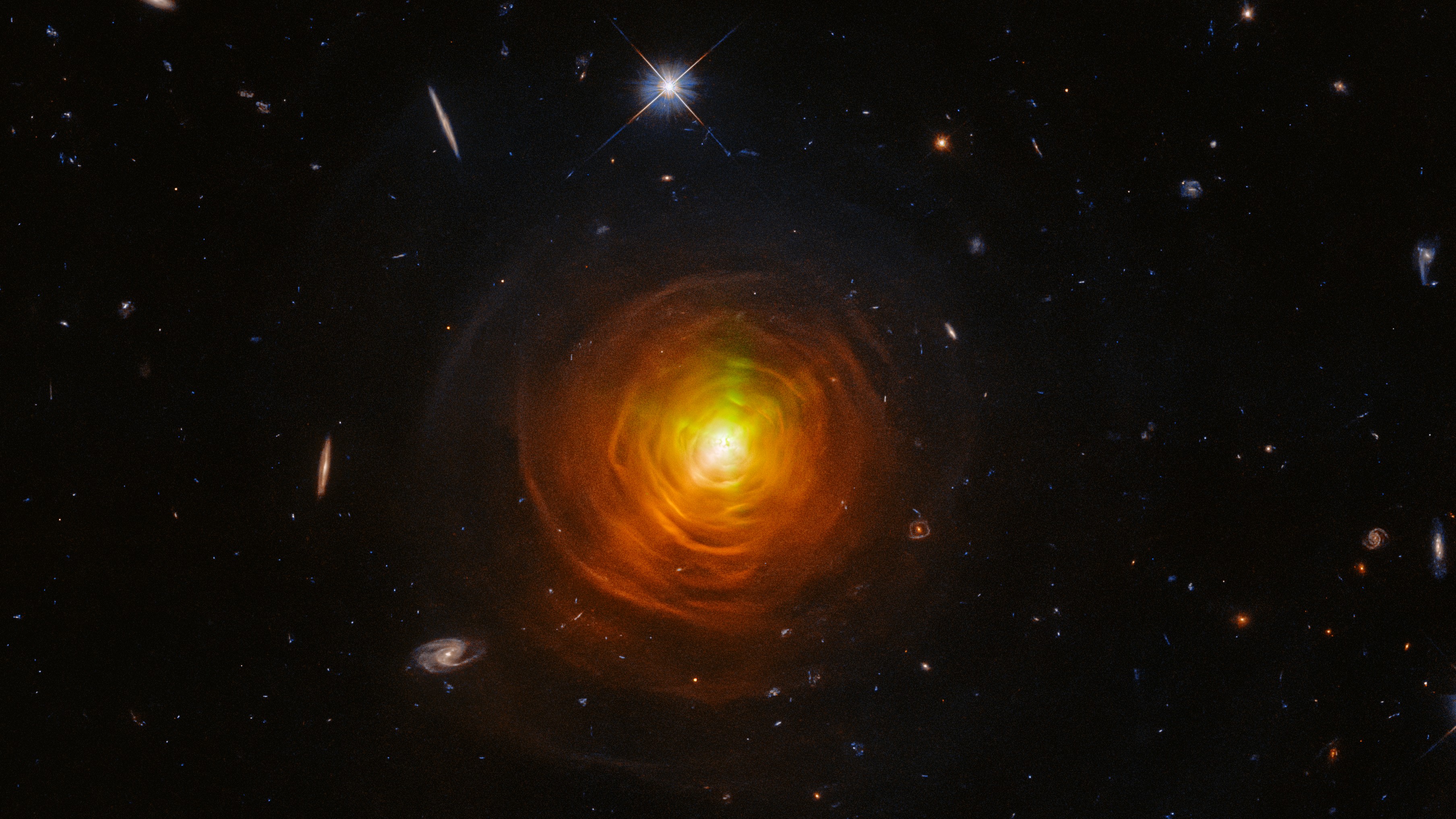Mysterious, ultraheavy stars are gobbling up atmospheres like carrion, new study hints
Strange, ultraheavy stars that are rich in barium grow massive by cannibalizing their companions, scientists discover after finally catching these stellar leeches in the act.

A strange type of ultraheavy star grows massive by feeding on the bloated, dying body of its companion, new research confirms.
While astronomers have long suspected that these "barium stars" — named for their unusually high levels of the heavy element barium — come from feeding on material from a companion, now they've finally caught these stellar leeches in the act.
Astronomers William P. Bidelman and Philip Keena first discovered the stars in 1951 after noticing high levels of barium in their atmospheres. All stars are made almost completely of hydrogen and helium, but they contain small traces of heavier elements such as barium.
Barium stars are on another level. In addition to barium, they contain large amounts of other heavy elements that are forged in one particular way, known as the s-process.
Related: Biggest black hole jets ever seen are as long as 140 Milky Ways
Astrophysicists already knew that the s-process happens inside large stars near the ends of their lives when neutrons slam into light elements like helium and hydrogen, triggering them to fuse into heavier ones like carbon, strontium and barium.
But barium stars themselves aren't always near the ends of their own lives, so they couldn't have formed these elements on their own. In a paper published to the preprint database arXiv Sept. 4, astronomers confirm that these oddball heavy stars are cosmic leeches.
Sign up for the Live Science daily newsletter now
Get the world’s most fascinating discoveries delivered straight to your inbox.
The team found two new barium stars. Critically, in addition to the measurement of s-process elements within the stars, they ruled out many nuclear processes that could explain how these stars form.
They also confirmed for the first time that each of these stars is a member of a binary system. In one case, they found strong evidence that the companion is a white dwarf, the leftover remnant of a sun-like star.
Because barium stars can't form their heavy elements themselves, nearby companion stars are the likeliest possible source. In this scenario, to get its barium, the star's companion has to go through its entire life cycle. Near the end of the companion's life, it begins the s-process and produces high amounts of barium and other elements, which then make their way into its upper atmosphere. As the companion star swells to become a red giant, it eventually loses its atmosphere altogether. Some of that atmosphere finds its way onto its partner, enriching that star and turning it into a barium star.
While astronomers had long suspected this scenario was the case, they had no direct proof. The new binary barium stars are the first examples of their kind, lending a strong piece of evidence to this complex puzzle.

Paul M. Sutter is a research professor in astrophysics at SUNY Stony Brook University and the Flatiron Institute in New York City. He regularly appears on TV and podcasts, including "Ask a Spaceman." He is the author of two books, "Your Place in the Universe" and "How to Die in Space," and is a regular contributor to Space.com, Live Science, and more. Paul received his PhD in Physics from the University of Illinois at Urbana-Champaign in 2011, and spent three years at the Paris Institute of Astrophysics, followed by a research fellowship in Trieste, Italy.









